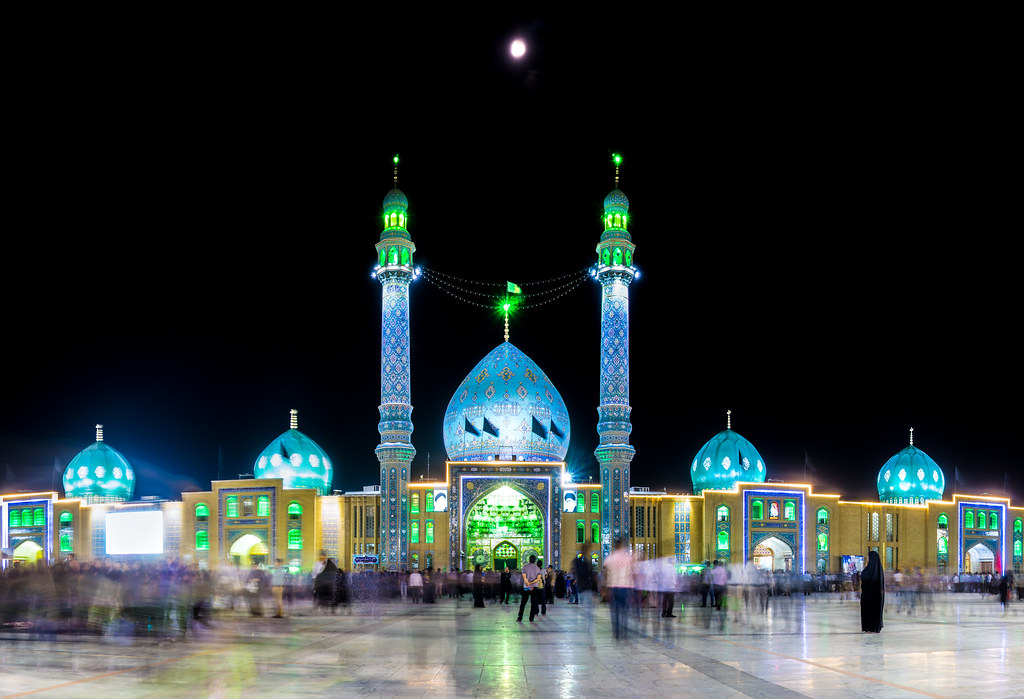Iran Press/ Iran News: Mosque, locally called masjid, or masjid (“a place of prostration” to God), is any house or open area of prayer in Islam. Generally speaking, the architecture of mosques in Iran is a combination of symmetry, geometric designs, and vibrant colors.
 Nasir Al-Molk Mosque, Shiraz
Nasir Al-Molk Mosque, Shiraz
The architecture of the mosques in Iran varies from one region to another, due to geometric structures, materials, and styles specific to each location. These mosques often have very complex structures in which color variations, tiles, and symbolic designs are used.
Sheikh Lotfollah Mosque, Isfahan
The Sheikh Lotfollah Mosque is a stunning example of intricate Iranian architecture, standing tall since the early 17th century. The design of the building itself is rather simple, but the tile work makes it well worth the visit.
Sheikh Lotfollah Mosque is best recognized for its defiantly off-center dome and lack of minarets. The cream-hued tiles shift colors as the sun moves throughout the day, giving them a pinkish tint at times.
Covered in vivid colored tiles inside and out, its dome is without a doubt the focal point of attention with its arabesque designs that become smaller as they approach the center.
Nasir Al-Molk Mosque, Shiraz
Between 1876 and 1888, the Nasir al-Mulk Mosque in Shiraz, Fars Province, Iran, was constructed and is considered the best mosque in Tehran. The Qajars were a Turkic tribe with ancestral territories in modern-day Azerbaijan, which was formerly a part of Iran. Agha Mohammad Khan founded his dynasty’s capital in Tehran, which is now the capital of Iran, in 1786.
The most magnificent structure in Iran, according to popular opinion, is this architectural wonder. Nasir ol-Molk, often known as the “Pink Mosque” because of its many rose-colored tiles, is a great place to spend your morning in Shiraz.
Jameh Mosque, Yazd
The terms “Jameh Mosque”, “Masjed-e Jameh” or “Friday Mosque” is used in Iran for a grand communal mosque where mandatory Friday prayers are performed: the phrase is used in other Muslim countries but only in Iran does it designate this purpose.
The mosque, which was first built under Ala’oddoleh Garshasb of the Buyid dynasty, is still in use today and is a fine example of Persian architecture.
Vakil Mosque, Shiraz
The Vakil Mosque is a mosque in Shiraz, situated to the west of the Vakil Bazaar next to its entrance. This mosque was built between 1751 and 1773, during the Zand period; however, it was restored in the 19th century during the Qajar period. Vakil means regent, which was the title used by Karim Khan, the founder of the Zand Dynasty.
Shiraz was the seat of Karim Khan’s government and he endowed many buildings, including this mosque. Vakil Mosque covers an area of 8,660 square meters. It has only two iwans instead of the usual four, on the northern and southern sides of a large open court.
Goharshad Mosque, Mashhad
The great mosque of Goharshad is a remarkable Islamic structure due to its age, architectural characteristics, and rich tile decorations. Made of brick and plaster in the 15th century, it used to be served as a free-standing mosque and currently serves as one of the prayer halls within the splendid Imam Reza Shrine Complex in Mashhad. On the margins of the main veranda’s entrance, there is an old inscription carved by calligrapher Baysunqur Mirza.
This comprehensive deed of endowment suggests that the mosque was built when Shahrokh, the Timurid king, was on the throne. The construction started in 1418 by the order of Queen Goharshad, the wife of Shahrokh. It took about 12 years to be completed under the supervision of capable Iranian architect Ghavameddin Shirazi by the use of the architectural and decorative manpower supplied from the Iranian cities of Shiraz and Isfahan.
Imam Mosque, Isfahan
Imam Mosque is a part of the complex of Naqsh-e Jahan Square – the main attraction of Isfahan. It is regarded as one of the masterpieces of Persian architecture in the Islamic era. Along with Naqsh-e Jahan Square, the mosque is registered as UNESCO World Heritage Site and is a popular destination for tourists visiting Isfahan.
Imam Mosque was built between 1611 and 1629 as a part of Naqsh-e Jahan Square complex by the decision of Shah Abbas. The task for the leading architect of the project, Shaykh Bahai.
Jamkaran Mosque
Masjid-e-Jamkaran is an important pilgrim center for Shia Muslims who are followers of the Twelve Imams. Located near Qom, the Masjid draws pilgrims from all parts of Iran as well as other countries, who stream into Qom where all roads head to the mosque on Tuesday evenings. The Masjid was built in the year 393 AH (1003 by the Gregorian calendar) by Hassan Bin Maslah by the order of Imam Madi (AS), the Twelfth Imam of the Shia Muslims.
The mosque is an architectural masterpiece that celebrates Persian art in every corner. The blue and green domes with minarets decorated with Persian tiles stand out vividly against the clear sky attracting your attention even as you drive towards the complex.
 Masjid-e-Jamkaran is an important pilgrim center for Shia Muslims
Masjid-e-Jamkaran is an important pilgrim center for Shia Muslims
Architecturally speaking, few places can contend with the mosques that Iran has to offer. It’s the blend of geometric designs, symmetry, and vibrant colors that dazzle the eyes of visitors and locals alike.
Read More:
Historic churches; What Iran is known for
Historic Castles; What Iran is known for
Persian Qanat; what Iran is known for
Ashkan Salehian

